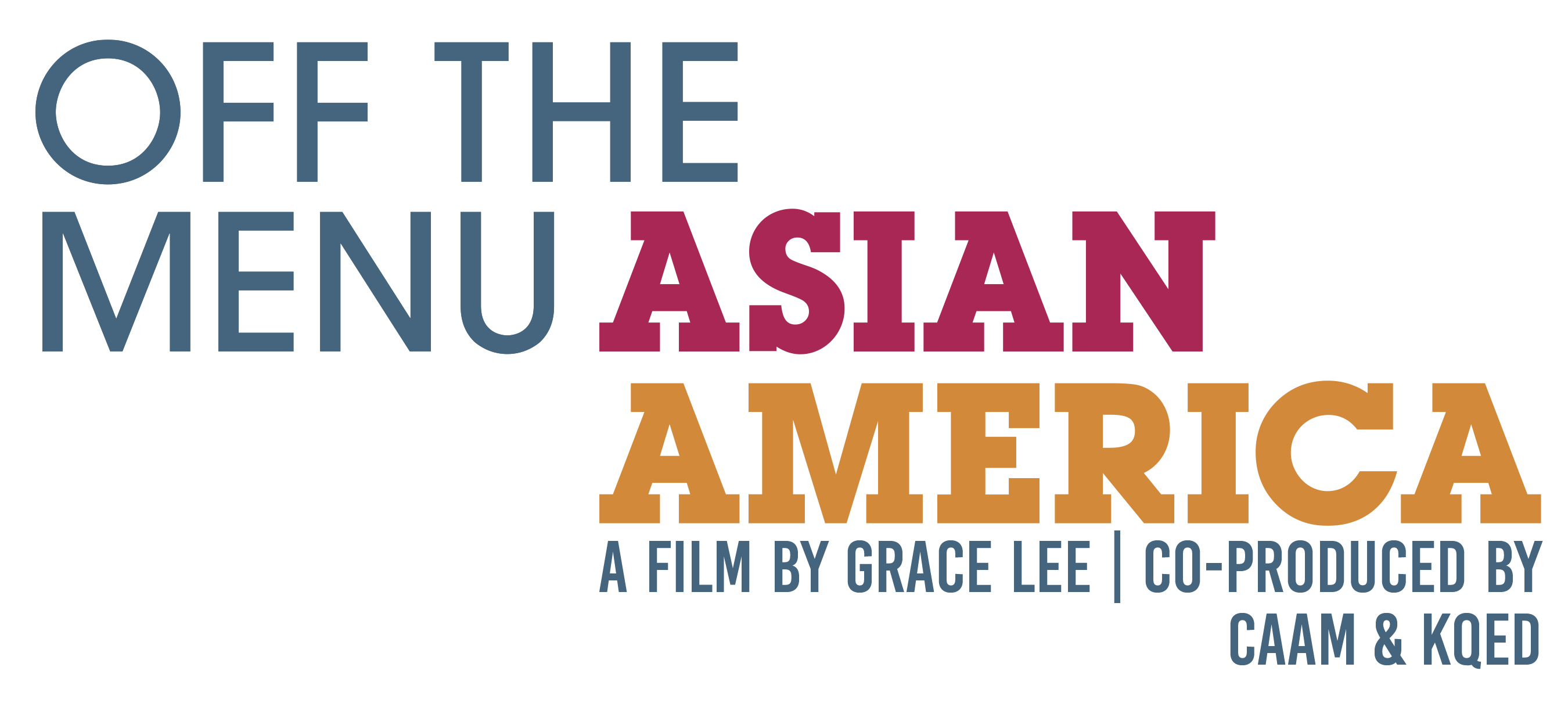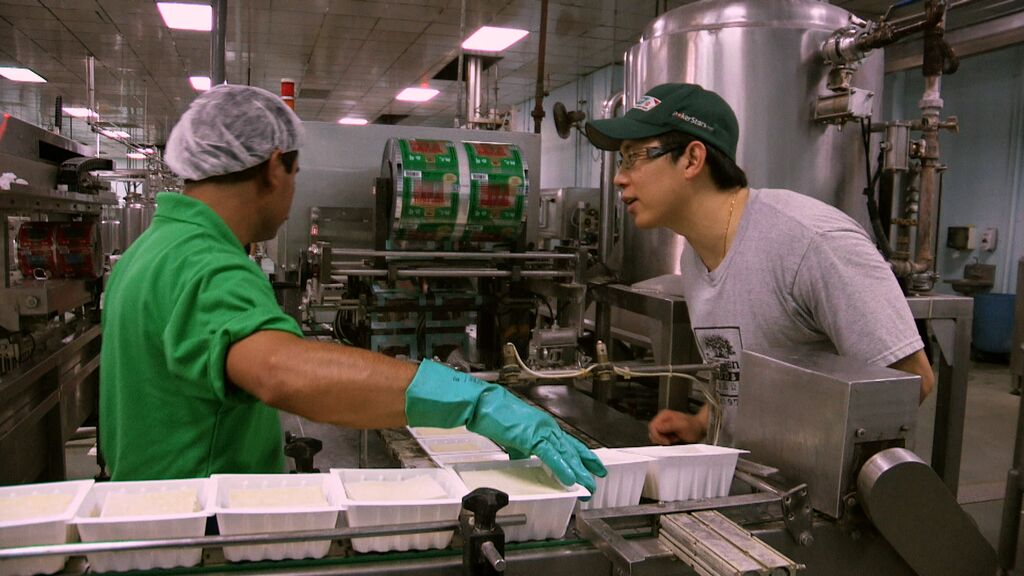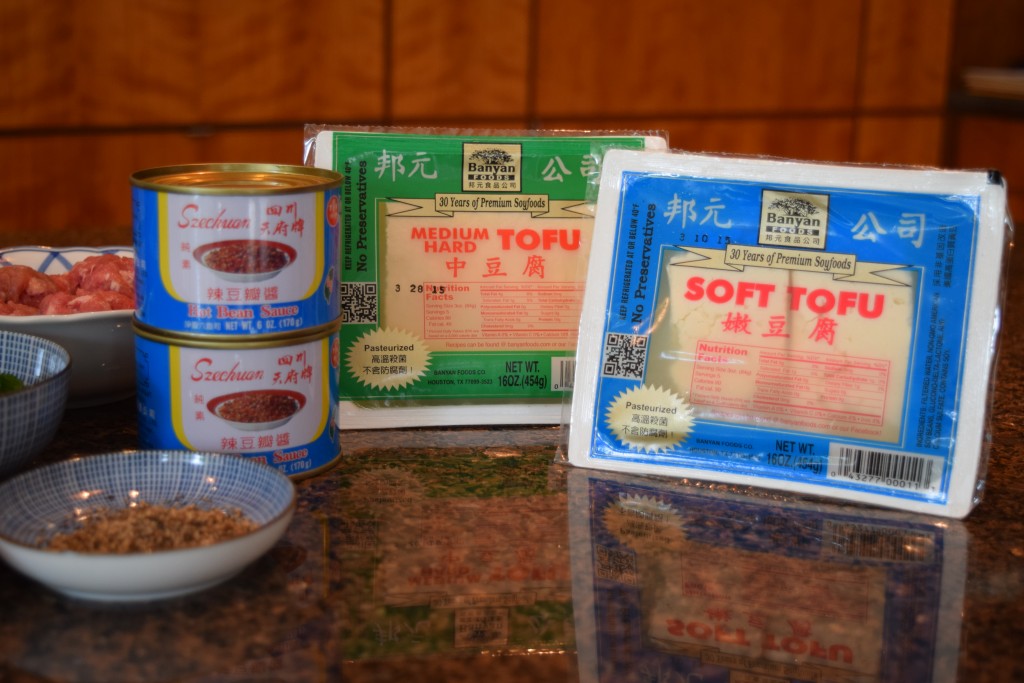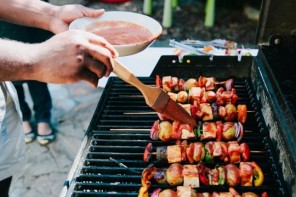In Off the Menu: Asian America, director Grace Lee travels through four locations in the U.S. in search of stories about Asian Americans and food. One of the families we meet is the Chius based in Houston, who run the oldest tofu factory in Texas, Banyan Foods. They use non-gmo soy beans to make their tofu products, and have expanded from simple soft tofu and fresh soy milk to fusion, ready-to-eat foods like tofu tamales.
Gary Chiu returned to work at the family business. Beyond the Chiu family, the tofu factory has longtime Latino employees who’ve grown with the company. Chiu shares more about himself and about being in the documentary.
Did you grow up eating Asian food? What are some of your earliest food memories?
As an immigrant in Texas, my mother was highly suspicious of artificial additives and food colors in American food, so she fervently cooked as many meals as she could, and of course, they were all Asian. My fondest Asian food memories range from immaculately made egg tarts (“dan ta”) to a simple steamed rice with canned sardines and tomato sauce, steamed rice with canned tuna fish. Steamed rice with runny eggs, soy sauce, and pork sung. Pretty much, steamed rice with anything. Due to necessary economic frugality, some meals were so deliciously simple, that they still mystify me. For example, one favorite was rice noodles mixed with sautéed minced garlic and salt. To this day, I’m not sure if that was a cherished Taiwanese heirloom recipe or a creation of immigrant ingenuity within an entrepreneur’s time constraints, but it was comfort food to me.
Can you tell us a little bit about Banyan Foods?
Banyan Foods is the oldest tofu company in Texas, founded in 1978. Originally specializing in raw tofu and soymilk servicing the local Chinatowns, we’ve since branched into refrigerated and frozen vegan entrees, vegan tofu egg rolls, and cross-genre “fusion” items such as tofu tamales distributed to local H.E.B. grocery stores, Fiestas, Whole Foods, and Central Markets. As we grow as a company, we are trying to preserve the ethos of a “family business,” where labor is valued, decision making ethical, and recipes innovative. Note I did not mention “authentic” with regards to recipes. I believe that term is too often used to sell a cultural façade, denying the reality that culture itself isn’t monolithic, and unchanging.
We like to think that in a small way, we helped plant a cultural seed of tofu within a predominantly-BBQ culture of Texas.
How old were you when you started working at the tofu factory and Banyan Foods? Did you ever think you would end up working in the family business?
I was probably around 8 when I started packing tofu into boxes at the factory and emptying out the same boxes, when shelving tofu in grocery stores. One of our earliest delivery runs, was actually to Tokyo Gardens, one of Glenn Gondo’s earliest sushi bars in Texas [Gondo is also a subject in the film]. A few years later, I’d be answering phones in the office.
Originally, my mother envisioned that I’d be a lawyer. But after my mother became sick, I decided to return to the business. No, I did not ever think I’d be working in the family business. It used to be a symbolic albatross on my neck, serving as the last vestigial barrier to full American assimilation. Wow, was I a fool back then.
What is the role of Latino workers in the tofu factory, and what’s your and your family’s relationship with the families like?
We’ve been making tofu by hand since the inception of our company, long before “hand making” anything was translated into “artisan,” and granted cachet. So being labor intensive has always been the reality of how Banyan Foods makes tofu. But why Latino workers? That answer lies in the intersection of the history of Houston Chinatown in particular, and immigration patterns across the nation at the time. Back in the late 70’s, early 80’s in Houston, Chinatown was still in its relative infancy and very few Asians were in Houston, let alone an Asian labor force. The hiring of Latinos to make tofu was strange to my parents at the time, but there were little alternatives. Today, 90 percent of the food in Houston Chinatown is cooked by Latinos. You can regularly find fried rice on the menu at many local taquerias here, opened by Latino entrepreneurs. Oh that other 10 percent? You won’t find me there.
When you have employees working for you that have spent decades helping you build your company, and you see them buy their first cars, get married, raise families, you naturally develop a close relationship with them. Inevitably, one family business encompasses many other families. This is why we’ve made many of our oldest employees part owners, as in shareholders of Banyan Foods. Our long time banking partner, Integrity Bank, does the exact same thing. What is most valuable to your company, you must value, in return.
What was it like growing up in Houston and in the South as an Asian American? Were there specific food experiences that stand out to you?
I remember being envious of my classmates for having “American” lunches, like cheese and crackers with the envied “red stick,” fruit roll ups, and that hallowed meal of meals: the ham and cheese sandwich. So my mother decided to go one step further–she delivered cold Chicken McNuggets to school, at lunchtime, daily. For months. While I was suddenly the envy of my classmates, I learned an early lesson in monotony, and the negative side of the adage, “getting what you wish for.”
What are your favorite dishes and cuisines?
I’m raised in Texas so Asian, Latino, and Southwestern cuisine will always be preferential biases for me. I also love Indian/Pakistani cuisine. I will always favor a restaurant with a low Yelp rating and amazing recipes over anything to the contrary. But don’t make me sign up months in advance for a reservation. A sage known as Kimberly Wilkins once said “ain’t got time for that.” That pretty much rings true for me.
What is your favorite tofu dish?
Mapo tofu, my mom’s. I’ll share that recipe with you, but you have to promise to tell everyone. My mom was trained by Chef Fu Pei Mei in Taiwan, and I value that culinary resource that she brings to every recipe we consider.
What is it like being a subject in Off the Menu: Asian America?
Amazing. I watched very few stories about “us” growing up, and even fewer about immigrant entrepreneurial lives. Years later, I would’ve never imagined being able to participate in storytelling to the current generation of future entrepreneurs and family business owners. A small piece of trivia, I once tried out for Season 2 of The Apprentice. Wow, they definitely missed their chance, I would’ve rocked Trump’s show.
What do you hope people take away from watching the documentary, or your segment in the show?
That “business” is often “personal,” and I’d like the 12 year-old version of me watching to embrace their family business with pride, rather than shun it for being “not American enough.” Remember, we are as American as apple pie (which is actually immigrant English).
Is there anything else you want to add?
Thanks to Leonard Shek (@gentrychicken in Los Angeles) and Director Grace Lee for the opportunity to tell our story.
Mama Chiu’s Mapo Tofu
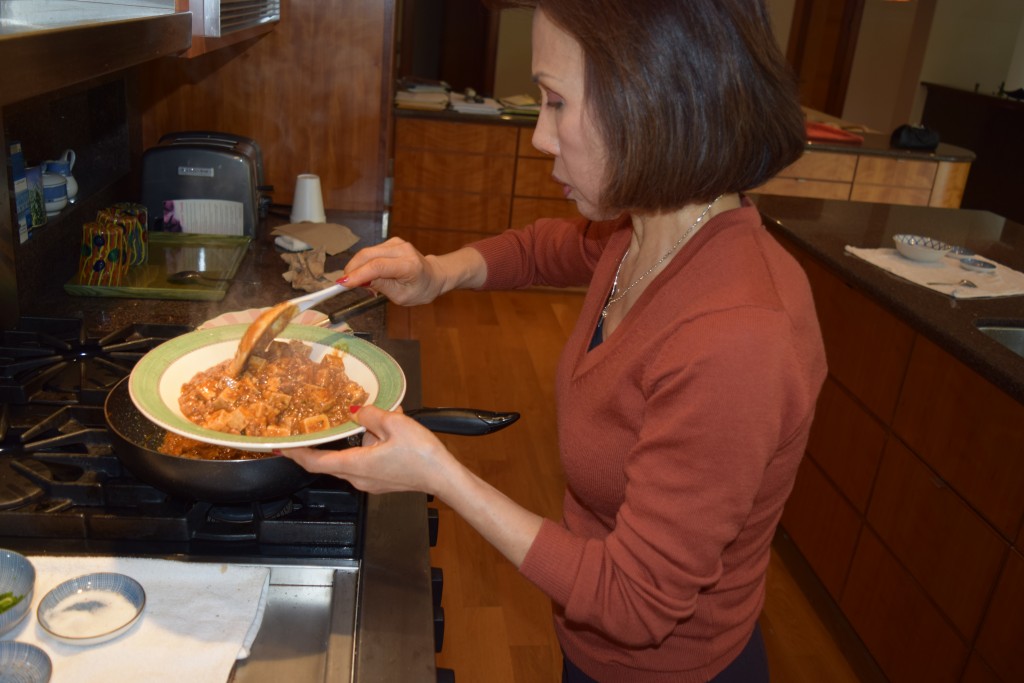
Ingredients:
In medium heat warm oil in a pan, add minced garlic. Warm until garlic smells like a real kitchen should. Add ground meat and brown the meat. Add hot bean sauce, soy sauce and water, and mix thoroughly. Bring to a slight boil.
Add cubed soft tofu and mix well. My mom loves to finish with a mixture of cornstarch and water to thicken the recipe. Top with chopped green onions.Serve with steamed rice. Forgive us if this recipe is imprecise, but Mama Chiu measures nothing. 🙂
– Gary Chiu
